 |
|
JCSAT-18/Kacific1 (Falcon 9) 16 December 2019 |
Space Launch Complex 40 Cape Canaveral Air Force Station |
A SpaceX Falcon 9 rocket launched JCSAT-18/Kacific1 from Space Launch Complex 40 (SLC-40) at Cape Canaveral Air Force Station at 7:10 p.m. on 16 December 2019. Falcon 9’s first stage for the JCSAT-18/Kacific1 mission previously supported the CRS-17 mission in May 2019 and the CRS-18 mission in July 2019. Following stage separation, Falcon 9’s first stage landed on the “Of Course I Still Love You” droneship stationed in the Atlantic Ocean about eight and a half minutes after launch. SpaceX’s two fairing recovery vessels, “Ms. Tree” and “Ms. Chief,” were not successful in catching the two fairing halves about 45 minutes after launch but did recover them from the water later. |
|
A description of the payload from the SpaceX press release: "Boeing built the JCSAT-18/Kacific1 satellite, equipping it with two unique payloads. The JCSAT-18 satellite was built for SKY Perfect JSAT, one of the largest providers of multichannel pay TV broadcast services in Japan, which operates the largest satellite communications business in Asia. The JCSAT-18 satellite will provide Ku-band coverage and improve mobile and broadband services for SKY Perfect JSAT Corporation customers in the Asia-Pacific region, including the far eastern part of Russia. The satellite features technologies in the power subsystem to achieve highest efficiencies, and it also features command and data handling technologies to provide a more secure spacecraft. Boeing has built 13 satellites, including two high-throughput satellites, for SKY Perfect JSAT Corporation and its predecessors since the 1980s. Kacific1 is a next-generation geostationary satellite operating in the Ka-band frequency spectrum. Its 56 high-throughput spot beams will place capacity over selected regions in South East Asia and the Pacific Islands. Deployed to a geostationary orbital position above Asia Pacific, Kacific1 will transmit to state- of-the-art gateways, designed and built by Kratos. Kacific1 will connect previously unserved or under-served populations with affordable, high-speed broadband for health care, education, government services, businesses, and disaster relief. Its services will stimulate economic growth and provide greater access to the internet." |
|
GO Searcher departs Port Canaveral |
|
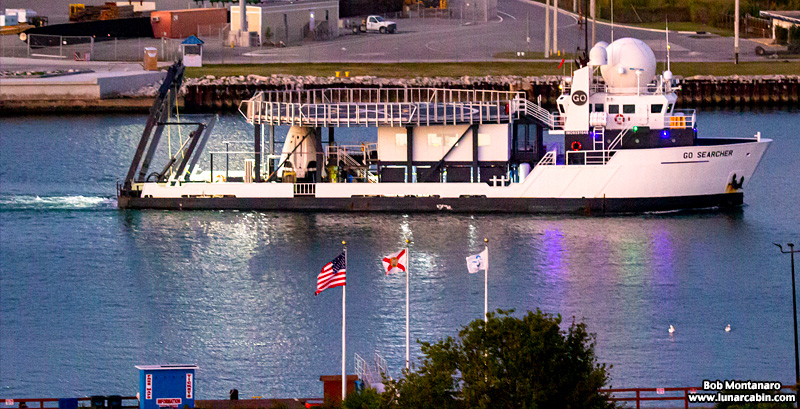 |
|
| The SpaceX support ship GO Searcher left Port Canaveral about an hour before launch. Note the mock-up Dragon spacecraft below the helicopter pad. The metal device sticking up in the air at the stern is used to recover Dragon from the water and bring the spacecraft onto the deck. | |
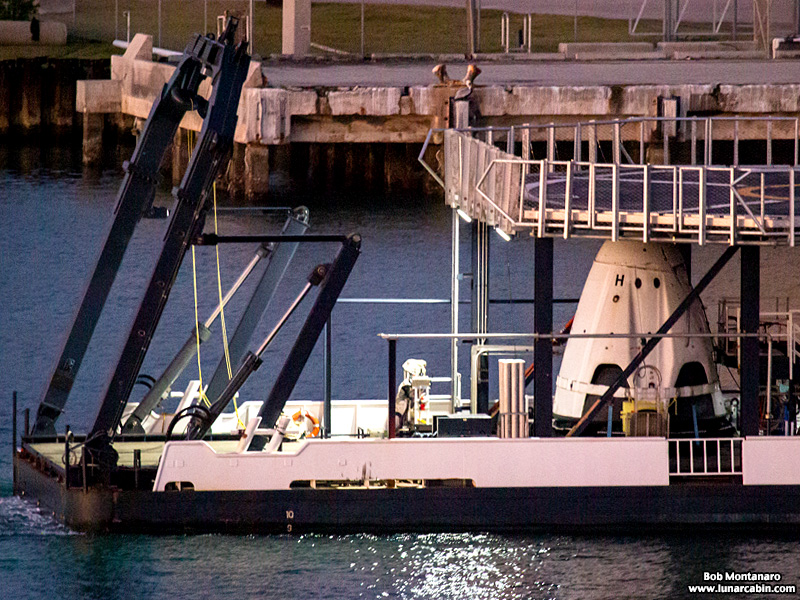 |
|
| A better view of the Dragon spacecraft mock-up used for training purposes can be seen under the helicopter pad. | |
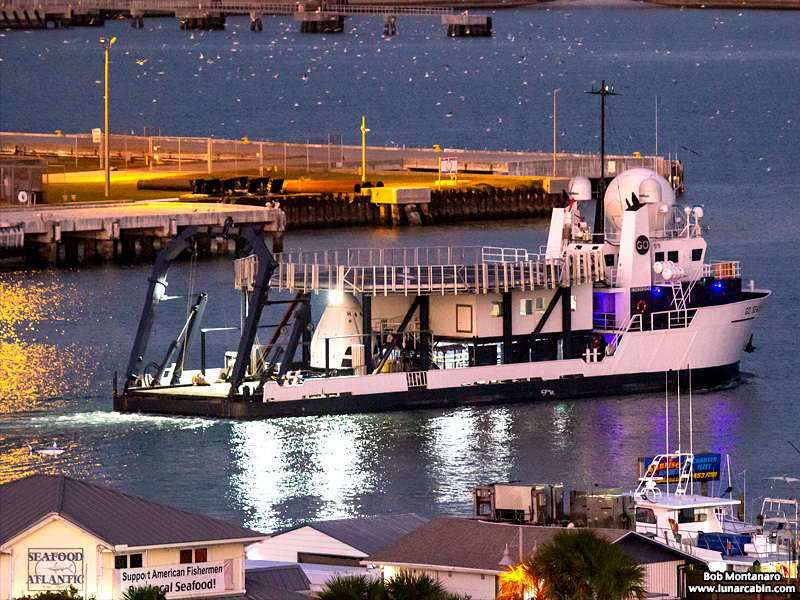 |
|
The Launch |
|
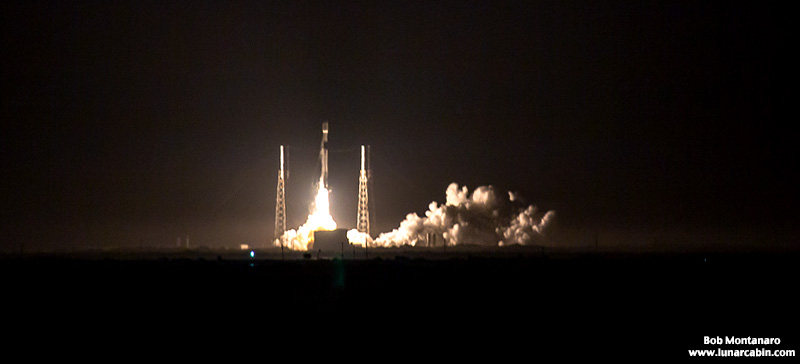 |
|
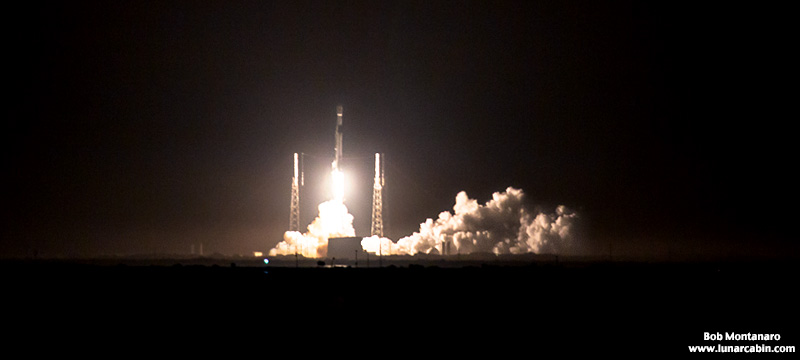 |
|
 |
|
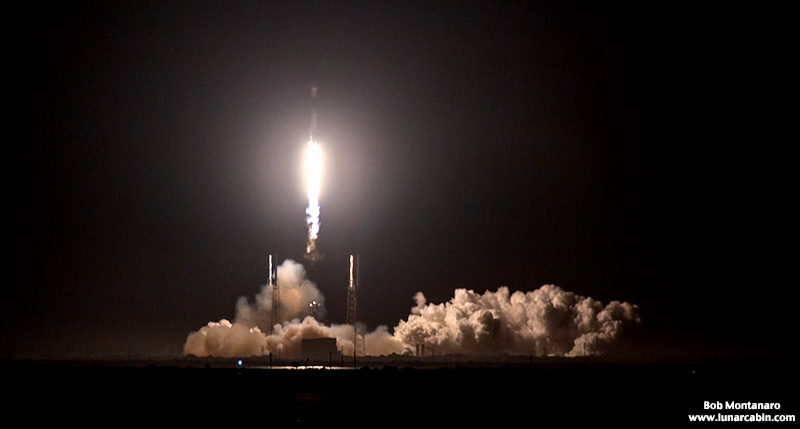 |
|
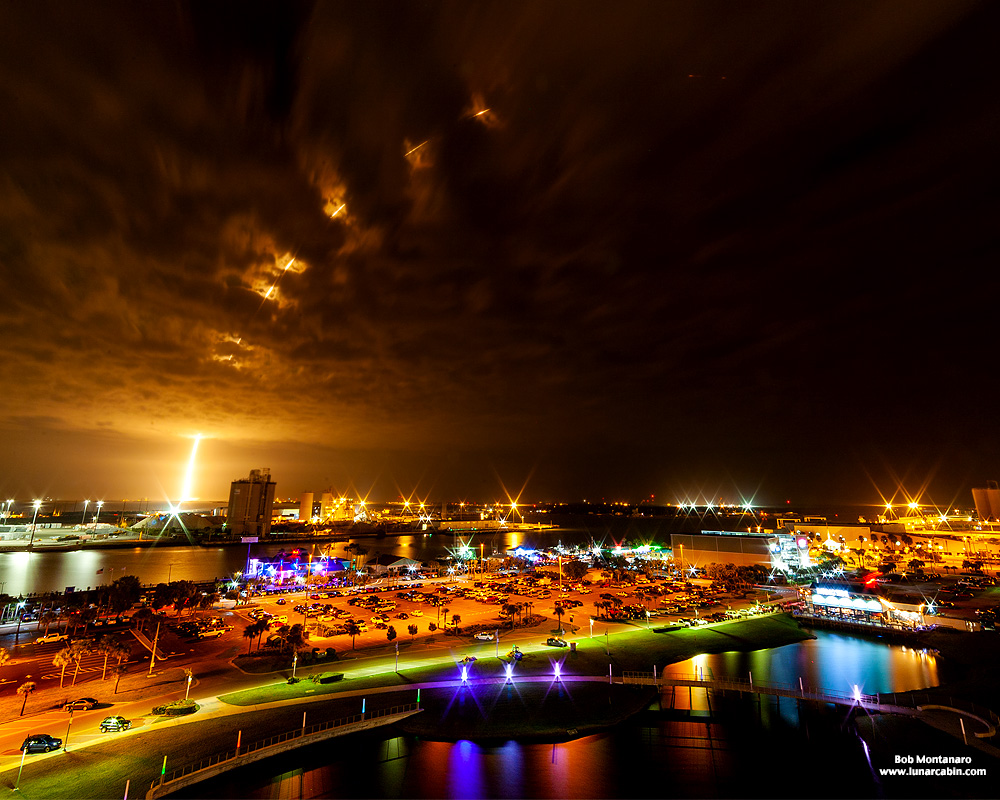 |
|
| Clear skies in the hours leading up to the launch gave way to unexpectedly cloudy skies right at launch time. In this time exposure the streak of the rocket can be seen through openings in the clouds as it arcs over Port Canaveral. | |
All contents copyright Lunar Cabin |
|